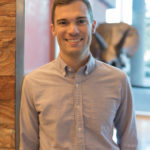Alumni
Find out what some of the Center’s recent alumni (since the establishment of the School of Earth & Space Exploration) have been working on!
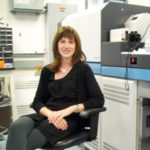 Audrey Bouvier Associate Professor, University of Bayruth
Audrey Bouvier Associate Professor, University of Bayruth(Post Doctoral Research Associate, ASU School of Earth & Space Exploration, 2007-2011)
Dr. Bouvier is interested in unraveling the chronology of planetary processes that took place during the first few million years of Solar System history such as the formation of the first condensates in the solar nebula, and the accretion and evolution of planetesimals.
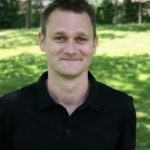 Gregory Brennecka Staff Scientist, Lawrence Livermore National Laboratory
Gregory Brennecka Staff Scientist, Lawrence Livermore National Laboratory(Ph.D. studies, ASU School of Earth & Space Exploration, 2007-2010)
Dr. Brennecka studies uranium isotope variations in Solar System materials, with a primary focus on how those variations affect early Solar System chronometers, as well as apparent nucleosynthetic anomalies in CAIs (calcium- and aluminum-rich inclusions).
 Julia Cartwright Department of Geosciences, University of Alabama
Julia Cartwright Department of Geosciences, University of Alabama(Post Doctoral Research Associate, ASU School of Earth & Space Exploration, 2014-2016)
Dr. Cartwright studies the formation of planetary regoliths and fluid processes in meteorites, as well as achondrite meteorites to understand the formation and evolution of their parent bodies and the Solar System as a whole.
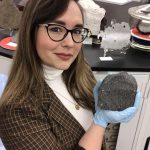
Jemma Davidson Branch Chief, Astromaterials Acquisition and Curation, NASA Johnson Space Center (Research Scientist, Buseck Center for Meteorite Studies and ASU School of Earth & Space Exploration, 2018-2024) Dr. Davidson is an isotope geochemist and petrologist who specializes in the study of primitive astromaterials, in particular the petrology and isotope chemistry of carbonaceous chondrites (including CM, CO, CR, CV, CK, and ungrouped carbonaceous chondrites), interplanetary dust particles, and their organic and presolar grain components.
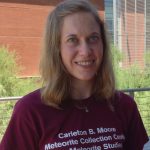 Emilie Dunham (Ph.D. studies, ASU School of Earth & Space Exploration, 2013-2019)
Emilie Dunham (Ph.D. studies, ASU School of Earth & Space Exploration, 2013-2019)Dr. Dunham analyzes the beryllium and boron isotopes of refractory materials from primitive meteorites in order to better constrain the processes that occurred in the extreme environment predating planetary formation in the early Solar System.

Daniel Dunlap Post Doctoral Research Associate, Lunar and Planetary Institute (USRA) / NASA Johnson Space Center (Ph.D. studies, ASU School of Earth & Space Exploration, 2013-2019) Dr. Dunlap uses short-lived radionuclides such as Al/Mg and Mn/Cr to investigate the timing of melting and differentiation on early forming asteroids and planetesimals to better comprehend the formational timeline of the rocky bodies in our Solar System.
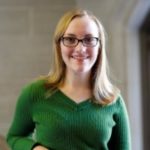 Elizabeth Dybal Geologist, Regulatory Compliance Officer and Strategist
Elizabeth Dybal Geologist, Regulatory Compliance Officer and Strategist(NASA Space Grant Undergraduate Fellow, ASU School of Earth & Space Exploration, 2013-2016)
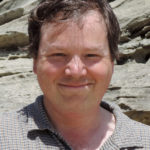 Philip Janney Associate Professor, Department of Geological Sciences – University of Cape Town
Philip Janney Associate Professor, Department of Geological Sciences – University of Cape Town(Associate Research Scientist, ASU School of Earth & Space Exploration, 2006-2012)
Dr. Janney’s research involves the application of elemental, radiogenic isotope and “non-traditional” stable isotope techniques to understand the geochemical evolution of the Earth’s mantle and crust.
 Imène Kerraouch Gordon McKay Postdoctoral Fellow, Lunar and Planetary Institute (USRA) / NASA Johnson Space Center(BCMS Postdoctoral Research Scholar, 2023-2025) Dr. Kerraouch studies formational processes in primitive chondrites and the early Solar System.
Imène Kerraouch Gordon McKay Postdoctoral Fellow, Lunar and Planetary Institute (USRA) / NASA Johnson Space Center(BCMS Postdoctoral Research Scholar, 2023-2025) Dr. Kerraouch studies formational processes in primitive chondrites and the early Solar System. Prajkta Mane Visiting Scientist, Lunar and Planetary Institute (USRA) / NASA Johnson Space Center (Ph.D. studies, ASU School of Earth & Space Exploration, 2011-2017)Dr. Mane studies the hydrogen isotope composition of martian meteorites to acquire insight into martian water reservoirs. She also analyzes refractory inclusions found in primitive meteorites, considered to be the first solids to condense in our Solar System.
Prajkta Mane Visiting Scientist, Lunar and Planetary Institute (USRA) / NASA Johnson Space Center (Ph.D. studies, ASU School of Earth & Space Exploration, 2011-2017)Dr. Mane studies the hydrogen isotope composition of martian meteorites to acquire insight into martian water reservoirs. She also analyzes refractory inclusions found in primitive meteorites, considered to be the first solids to condense in our Solar System. Cameron Mercer Post Doctoral Fellow, CRESST II/CUA/NASA Goddard Space Flight Center (Ph.D. studies, ASU School of Earth & Space Exploration, 2011-2017)
Cameron Mercer Post Doctoral Fellow, CRESST II/CUA/NASA Goddard Space Flight Center (Ph.D. studies, ASU School of Earth & Space Exploration, 2011-2017)Dr. Mercer performs thermochronological research in the Rocky Mountains, in addition to studying the timing of impact events on the Moon by using a laser microprobe to date NASA Apollo mission samples.
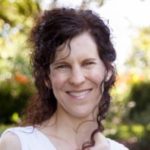 Michelle Minitti Faculty Research Associate, ASU School of Earth & Space Exploration
Michelle Minitti Faculty Research Associate, ASU School of Earth & Space Exploration(Assistant Director, ASU Center for Meteorite Studies, 2005-2012)
Dr. Minitti uses Martian analogs to investigate Martian meteorites and their context in Mars remote sensing datasets, as well as the role of water in igneous and weathering processes. She is also Co-Investigator on the Curiosity Rover Mars Hand Lens Imager (MAHLI) camera.
(Assistant Director, ASU Center for Meteorite Studies, 2012-2014)
Dr. Morris uses astrophysical modeling to determine conditions during the birth of planetary systems, particularly hydrodynamic modeling of protoplanetary disks and disk processes during planet formation.
 Vinai Rai Research Scientist, ASU School of Earth & Space Exploration (ASU Center for Meteorite Studies, 2016-2019) Dr. Rai works on such diverse topics as the nitrogen and noble gas systematics in ureilites, mass independent sulfur isotope compositions of meteorites and Antarctic ice cores, Sr-Nd isotopes in oceanic sediments, Mo isotopes in riverine systems, and Si isotopes in achondritic meteorites and water samples.
Vinai Rai Research Scientist, ASU School of Earth & Space Exploration (ASU Center for Meteorite Studies, 2016-2019) Dr. Rai works on such diverse topics as the nitrogen and noble gas systematics in ureilites, mass independent sulfur isotope compositions of meteorites and Antarctic ice cores, Sr-Nd isotopes in oceanic sediments, Mo isotopes in riverine systems, and Si isotopes in achondritic meteorites and water samples.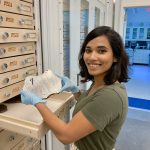 Soumya Ray Postdoctoral Research Associate, Los Alamos National Laboratory
Soumya Ray Postdoctoral Research Associate, Los Alamos National Laboratory(Ph.D. studies, ASU School of Earth & Space Exploration, 2016-2021)
Soumya measures Fe isotope fractionation and Si isotope composition in achondrite meteorites. Her Fe isotope work on aubrites, in particular, has provided new insight into the formation of metal nodules in these unique meteorites.
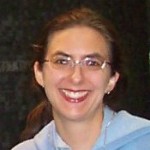 Karen Rieck Research Scientist, New Mexico Consortium
Karen Rieck Research Scientist, New Mexico Consortium(M.S. and Ph.D. studies, ASU School of Earth & Space Exploration, 2006-2015)
Dr. Rieck studies the ionized particles which comprise the solar wind. Her work includes the development of techniques for measuring the concentrations of elements in the solar wind, collected as part of NASA’s Genesis Mission.
Janessa Roy (BCMS Project Coordinator 2022-2024)
 Matthew Sanborn Scientist, Los Alamos National Laboratory
Matthew Sanborn Scientist, Los Alamos National Laboratory(Ph.D. studies, ASU School of Earth & Space Exploration, 2007-2012)
Dr. Sanborn analyzes nucleosynthetic anomalies to decipher petrogenetic histories of meteorites and the evolution of their associated parent bodies in the early Solar System, and determines isotopic constraints on the formation of the first solids and planetesimals.
Devin L. Schrader Space Scientist, NASA Johnson Space Center (Deputy Director, Buseck Center for Meteorite Studies and Associate Research Professor, ASU School of Earth & Space Exploration, 2015-2025) Dr. Schrader’s research interests concern primitive astromaterials that remain unaltered since their formation in the early Solar System and meteorites that were thermally and aqueously altered on their parent asteroids.
 Kate Souders Research Geologist, USGS Geology, Geophysics, & Geochemistry Science Center (Research Assistant Professor, ASU School of Earth & Space Exploration, 2014-2016) Dr. Souders’ research integrates mineral geochemistry and geochronology to understand the origin and evolution of Earth’s crust and differention of the mantle, and the provenance and diagenesis of detrital heavy minerals.
Kate Souders Research Geologist, USGS Geology, Geophysics, & Geochemistry Science Center (Research Assistant Professor, ASU School of Earth & Space Exploration, 2014-2016) Dr. Souders’ research integrates mineral geochemistry and geochronology to understand the origin and evolution of Earth’s crust and differention of the mantle, and the provenance and diagenesis of detrital heavy minerals.(M.S. studies, ASU School of Earth & Space Exploration, 2017-2019)
Gabriel’s research involves the development of new analytical methods for the measurement of stable strontium isotopes, including laboratory geochemistry and multi-collector plasma mass spectrometry.
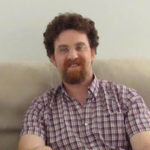 Lev Spivak-Birndorf Founder, PSI Labs
Lev Spivak-Birndorf Founder, PSI Labs(Ph.D. studies, ASU School of Earth & Space Exploration, 2007-2012)
Dr. Spivak-Birndorff’s research includes a heavy emphasis on different techniques of mass spectrometric analysis that are critical to the testing of both naturally occurring compounds and undesirable adulterants in medical cannabis.
 Alice Stephant Post Doctoral Research Associate, The Open University
Alice Stephant Post Doctoral Research Associate, The Open University(Post Doctoral Research Associate, ASU School of Earth & Space Exploration, 2015-2017)
Dr. Stephant’s research focusses on understanding the origin of water on planetary bodies in our Solar System through analyses of the hydrogen isotope ratios and water contents of meteorites and lunar samples.
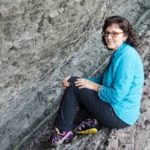 Wendy Taylor Honorary Research Associate, Department of Geological Sciences – University of Cape Town and Faculty Research Associate, ASU School of Earth & Space Exploration
Wendy Taylor Honorary Research Associate, Department of Geological Sciences – University of Cape Town and Faculty Research Associate, ASU School of Earth & Space Exploration(Education and Public Outreach Coordinator, ASU Center for Meteorite Studies, 2007-2010)
Scientist, Los Alamos National Laboratory
(Ph.D. studies, ASU School of Earth & Space Exploration, 2015-2020)
Dr. Torrano measures the isotopic composition of calcium-aluminum-rich inclusions (CAIs), including Cr, Ti, and Mg stable isotope analyses to investigate the heterogeneity of the CAI-forming region.
(M.S. studies, ASU School of Earth & Space Exploration, 2013-2015)
Kera Tucker works as a Systems Engineer for Lockheed Martin in the Space business area. She supports various spacecraft components at Lockheed’s Denver, Colorado office.
 Meenakshi Wadhwa Director, ASU School of Earth & Space Exploration (Director, ASU Center for Meteorite Studies, 2006-2019) Dr. Wadhwa is broadly interested in deciphering the origin and evolution of our Solar System and planetary bodies in it through geochemical and isotopic means. She utilizes high precision mass spectrometric techniques to investigate a wide range of Solar System materials.
Meenakshi Wadhwa Director, ASU School of Earth & Space Exploration (Director, ASU Center for Meteorite Studies, 2006-2019) Dr. Wadhwa is broadly interested in deciphering the origin and evolution of our Solar System and planetary bodies in it through geochemical and isotopic means. She utilizes high precision mass spectrometric techniques to investigate a wide range of Solar System materials.(Ph.D. studies, ASU School of Earth & Space Exploration, 2009-2012)
Dr. Williams’ research interests include the formation and evolution of the early Solar System, the composition and dynamics of Earth’s interior, volatiles and the Martian mantle, and the genesis of magmatic sulfide deposits.



